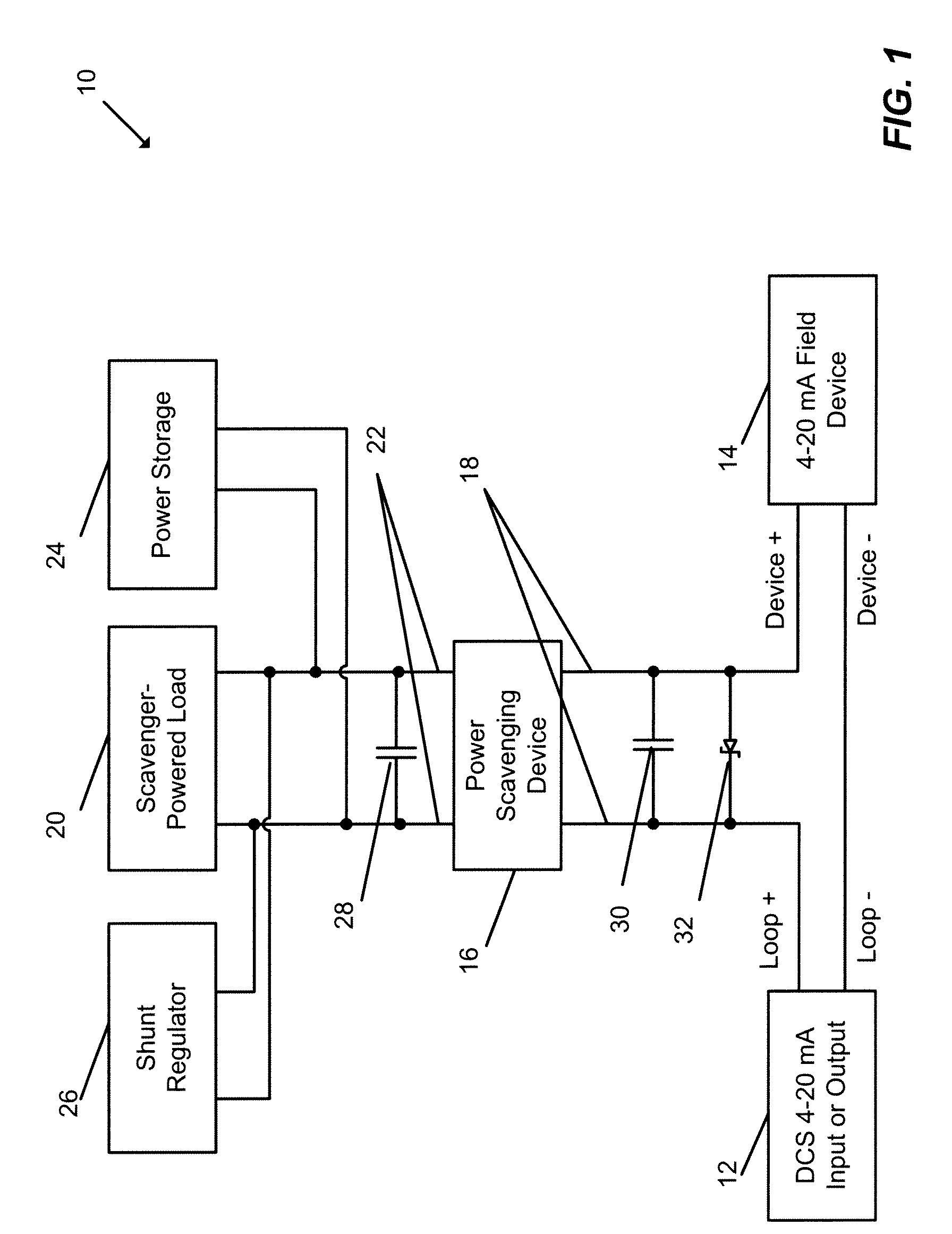Input regulated DC to DC converter for power scavenging
a technology of input voltage, which is applied in the direction of electric variable regulation, process and machine control, instruments, etc., can solve the problems of excessive voltage drop across the input terminal, unfit dc to dc converters for some applications requiring voltage conversion, and unregulated voltage across the input terminal of available dc to dc converters
- Summary
- Abstract
- Description
- Claims
- Application Information
AI Technical Summary
Benefits of technology
Problems solved by technology
Method used
Image
Examples
Embodiment Construction
[0020]FIG. 1 is a schematic representation of a system in which an input-regulated power scavenging device may be used to efficiently harvest excess power from a current loop and direct the excess power to a load, a storage device, or both. As illustrated in FIG. 1, a current loop or circuit 10 includes a Distributed Control System (DCS) 12, a field device 14, and a power scavenging device 16 connected in series with the field device 14. These and other circuit elements illustrated in FIG. 1 are connected in a wired manner.
[0021]In operation, the DCS 12 and the field device 14 send and receive 4-20 mA analog signals in a manner unpredictable to the scavenging device 16 implemented as an input regulated DC to DC converter. In other words, from the perspective of the scavenging device 16, the current in the loop 10 may uncontrollably vary with time in the 4 to 20 mA range. The power scavenging device is connected to the loop 10 in series through a pair of input terminals 18, with one ...
PUM
 Login to View More
Login to View More Abstract
Description
Claims
Application Information
 Login to View More
Login to View More - R&D
- Intellectual Property
- Life Sciences
- Materials
- Tech Scout
- Unparalleled Data Quality
- Higher Quality Content
- 60% Fewer Hallucinations
Browse by: Latest US Patents, China's latest patents, Technical Efficacy Thesaurus, Application Domain, Technology Topic, Popular Technical Reports.
© 2025 PatSnap. All rights reserved.Legal|Privacy policy|Modern Slavery Act Transparency Statement|Sitemap|About US| Contact US: help@patsnap.com



